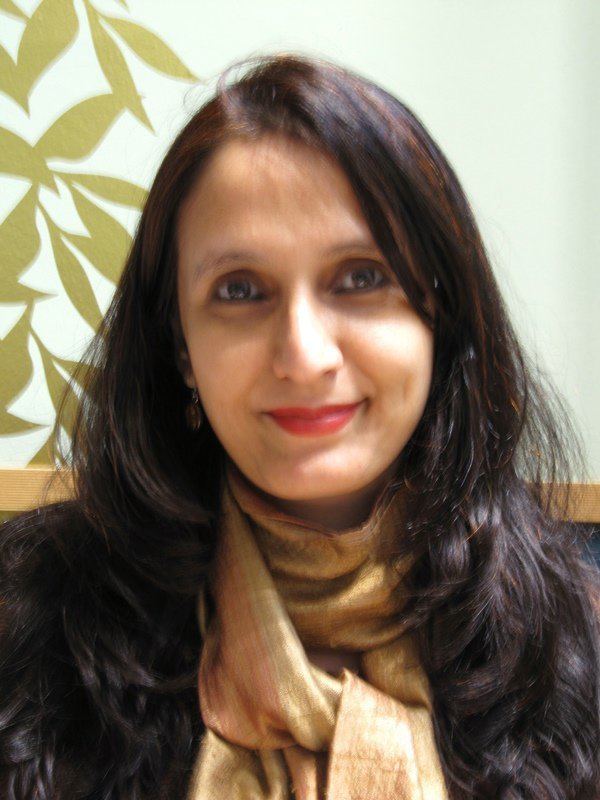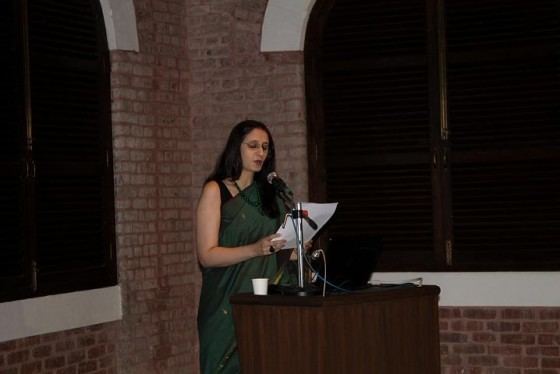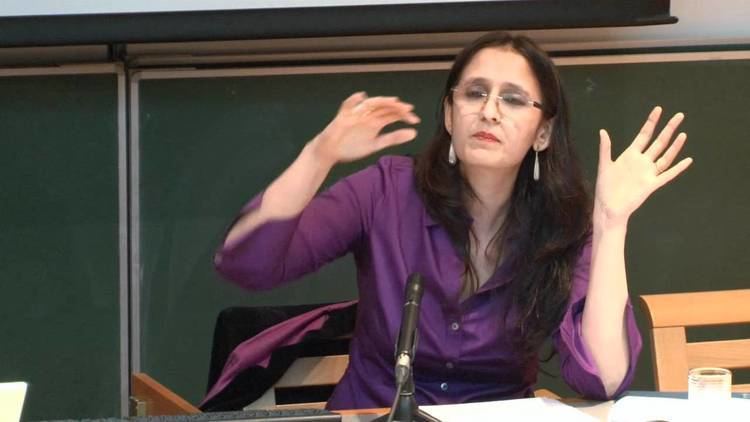Name Nancy Adajania | Role Art critic | |
 | ||
Books Atul Dodiya: The Wet Sleeves of My Paper Robe (Sabari in Her Youth, After Nandalal Bose). | ||
Nancy adajania global art symposium 2011
Nancy Adajania (born Bombay, 15 December 1971) is a cultural theorist, art critic and independent curator based in India.
Contents
- Nancy adajania global art symposium 2011
- DAS 2018 Symposium Displays of Internationalism Nancy Adajania
- Biography
- Exhibitions curated
- References

DAS 2018 Symposium: Displays of Internationalism - Nancy Adajania
Biography

Nancy Adajania was educated at the Princess Alexandra School, Elphinstone College, where she read Politics for her BA, the Sophia Polytechnic, Bombay, where she took a diploma in Social Communications Media, and the Film and Television Institute of India (FTII), Pune, where she studied film.
Adajania has written and lectured extensively on contemporary Indian art, especially new media art and its political and cultural contexts, at international venues such as Documenta 11, Kassel; the Zentrum für Kunst und Medientechnologie (ZKM), Karlsruhe; the Neuer Berliner Kunstverein and the Transmediale, Berlin; the Danish Contemporary Art Foundation, Copenhagen; Lottringer 13, Munich, among others.
As Editor-in-Chief of Art India (2000–2002), Adajania developed a discursive space singlehandedly, in an Asian context, for emergent new-media and interactive public art practices and social projects on a global level. She has contributed essays and reviews to Springerin (Vienna), Metamute (London), Art 21 (Paris), Public Art (Minneapolis), Art Asia Pacific (New York), X-Tra (Los Angeles) and the Documenta 12 Magazine (Kassel, 2007).
Adajania's film, 'Khichri Ek Khoj' (In Search of Khichri) (1999), weaves the documentary and the global meta-narrative forms together to "unveil the workings of a failed postcolonial welfare state", and has been screened at various venues in India and internationally, including the Mumbai International Film Festival (Bombay, 2000), in 'First Story: Women Building: New Narratives for the 21st Century' (Galeria do Palacio Cristal, Porto, 2001) and during the international symposium, 'Capital and Karma: Conversations between India and Europe' (Kunsthalle Wien, Vienna, April 2002).
The focus of Adajania's writing, research and curatorial interests is the relationship between the artistic imagination and the technological resources and potentialities available to it in any particular society and period. She has proposed several conceptual tools with which to examine the consequences of newness across various sectors of cultural production, including the concepts of the 'new folkloric imagination', 'new context media', and 'mediatic realism'. Adajania has reflected, in several essays and lectures, on the aesthetic and political effects of what, following the theorist Paul Virilio, she terms dromomania, an obsession with speed produced by the globalisation of communicative and distributive processes. In another strand of her engagement with the politics of cultural acts, Adajania has addressed the question of redefining public art within the particularity of regional public spheres.
Adajania was co-curator for the exhibition 'Zoom! Art in Contemporary India' (Lisbon, April 2004) and curated 'Avatars of the Object: Sculptural Projections' (Bombay, August 2006). She was also contributing curator for 'Thermocline of Art: New Asian Waves' (ZKM, Karlsruhe, Summer 2007). In 2011, Adajania was appointed Joint Artistic Director of the 9th Gwangju Biennale (Korea, 2012).
As the first coordinator of the newly founded crafts research department of the National Centre for the Performing Arts (NCPA), Bombay during 1994–1995, Adajania organised a cycle of symposia and workshops that explored the tension between contemporary art emerging from an urban milieu and the present-day manifestation of the traditional crafts. Intended by her to revisit and update the debates surrounding this tension, and to generate a new discourse in the field, this cycle of meetings included the national-level seminar, 'Should the Crafts Survive?', which dramatised the rival claims on the terrain of the contemporary, made by academy-trained metropolitan artists and artists of rural, tribal or folk background articulating their own modernity (1995).
In 2004–2005, Adajania was awarded an Independent Research fellowship by Sarai CSDS, a new-media initiative of the Centre for the Study of Developing Societies (CSDS), New Delhi (2004–2005), under which she studied the popular use of digital manipulation techniques of imaging in metropolitan India. She has since presented her research in the form of an archive-installation, 'In Aladdin's Cave,' exhibited at 'On difference 2/Grenzwertig' (Wuerttembergischer Kunstverein, Stuttgart, February 2006) and 'Building Sight' (Watermans Arts Centre, London, Summer 2007).
Adajania has also been developing an account of transcultural artistic practice, with its political and ethical referents as well as its institutional conditions. Adajania's specific concern is with situating the 'entanglements' (she uses the art theorist and curator Sarat Maharaj's term) between regional histories of artistic and intellectual production and a global system that is structured in terms of a Western art-historical understanding. Some of this writing has emerged from a collaboration with Ranjit Hoskote.
Adajania has held an Associate Fellowship with Sarai CSDS, and is in the process of establishing, jointly with Ranjit Hoskote, a new journal of critical inquiry in the visual arts. She has served as a member of the Academic Advisory Board of the Asian Art Archive, Hong Kong.
Adajania was a Co-Artistic Director of ROUNDTABLE: The 9th Gwangju Biennale (Korea, 2012).
